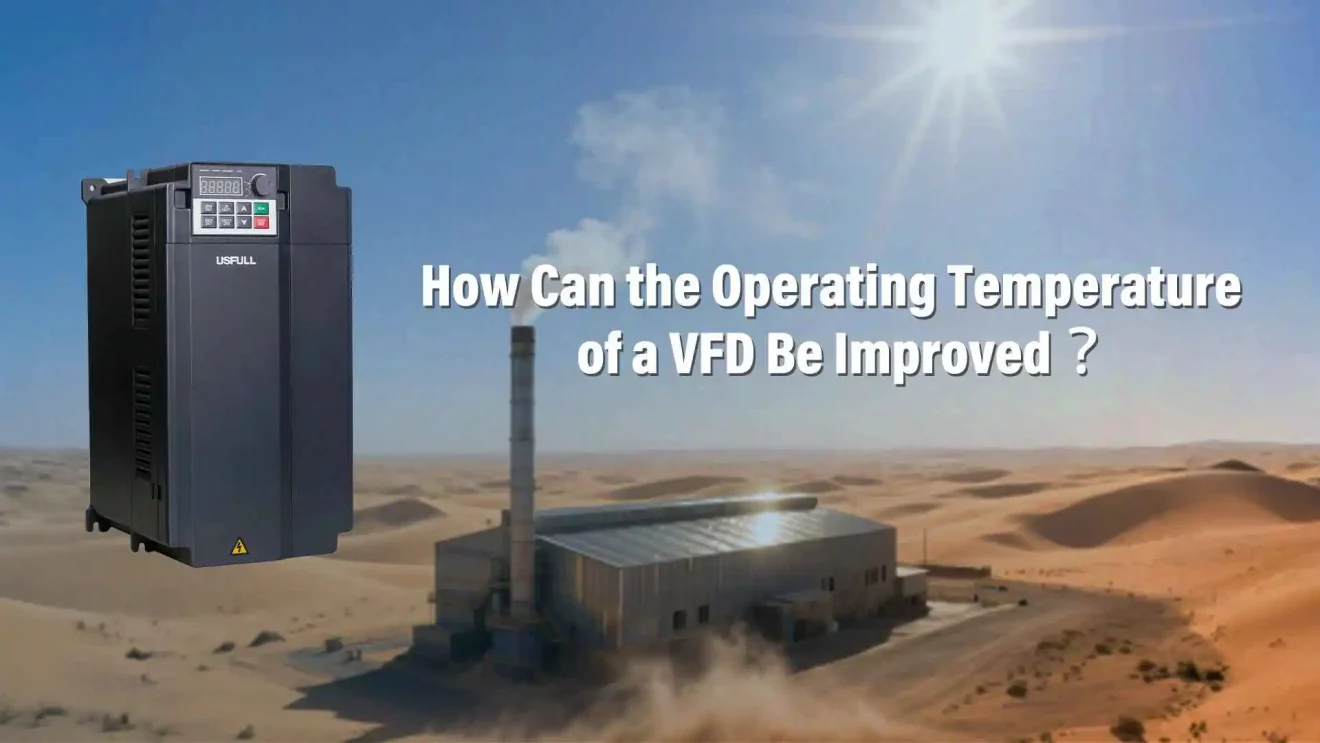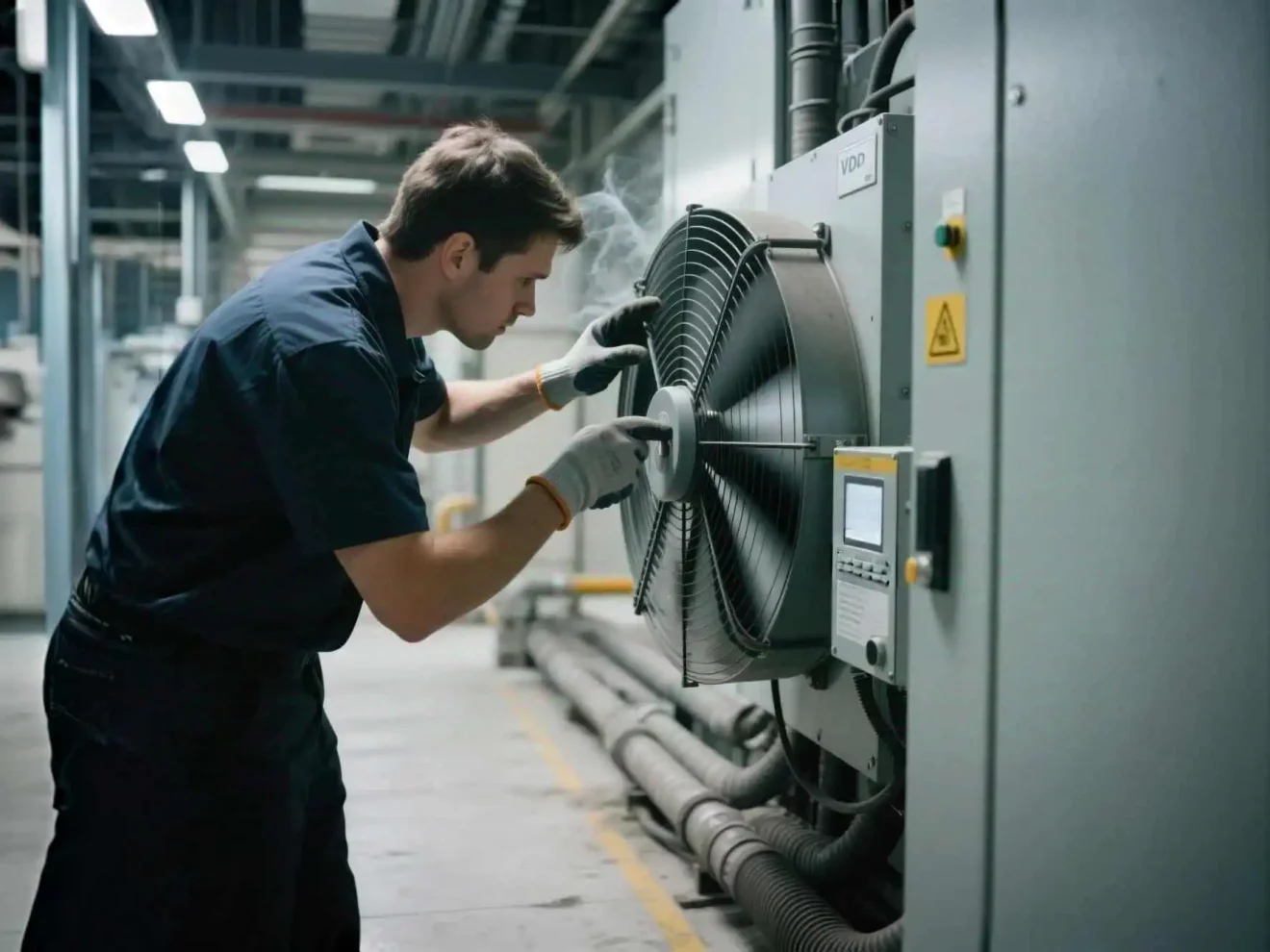Excess heat in a VFD leads to component damage and failures—risking downtime and high costs. Efficient cooling solutions like ventilation, air conditioning, and management strategies can ensure reliable operation.
Improving a VFD’s operating temperature requires better ventilation, active cooling (like air conditioning), and smart heat management policies. VFD manufacturers recommend combining enclosure design, airflow control, and cooling systems for long-term reliability.
Continue reading to discover practical, proven methods to keep your VFD running safely.

Why Is It Important to Control VFD Operating Temperature?
Variable frequency drives (VFDs), also called frequency inverters, variable frequency inverters, or variable speed drives (VSDs), play a critical role in controlling motor speed and improving energy efficiency. However, as VFDs integrate more advanced electronics into smaller enclosures, they generate more concentrated heat. Excessive heat in a VFD can degrade IGBT modules and capacitors, reduce performance, and dramatically shorten service life.
VFD manufacturers warn that temperatures exceeding safe limits—typically around 40°C ambient or 80°C internal for inverter components—can trigger thermal shutdowns, increase failure rates, and lead to expensive repairs or replacement. Especially in summer or high-load conditions, heat management is essential. Fortunately, VFD suppliers and industry experts offer multiple solutions that address these thermal challenges.
What Passive Cooling Strategies Help Reduce VFD Heat?
Passive cooling relies on natural airflow and heat dissipation to manage the temperature inside a VFD enclosure. The simplest method involves enhancing enclosure ventilation. For example, adding properly positioned intake and exhaust vents, along with filter fans, helps cooler ambient air flow through the cabinet. A rule of thumb from VFD manufacturers is to provide about 4 CFM of airflow per 1 HP of VFD capacity to maintain enclosure temperature no more than 10°C above ambient.
Another effective passive solution is to install heat exchangers that transfer heat from inside the enclosure to the external environment without direct air exchange, useful in dusty or dirty settings. High-quality enclosure design also matters: using materials with better thermal conductivity and ensuring adequate space around VFD components can further improve heat dissipation.

When Should You Choose Active Cooling for VFDs?
Active cooling becomes necessary when the ambient temperature exceeds your target VFD enclosure temperature or when passive methods are insufficient. Common active cooling solutions include enclosure air conditioners and water-cooled systems. These systems actively remove heat using mechanical refrigeration cycles or chilled water to absorb and transport heat away from sensitive electronics.
For example, VFD manufacturers suggest calculating cooling loads based on power losses. A typical VFD loses about 3% of its input power as heat. This means for every 1 HP, you’ll need approximately 75 BTU/h of cooling capacity. Active cooling systems are critical in high-temperature environments, compact installations, or when VFD enclosures are tightly sealed for protection against dust, moisture, or washdown conditions. A reputable VFD manufacturer in China or elsewhere can provide guidance on selecting the right cooling technology for your application.
How Can Smart Enclosure Design Protect a VFD from Overheating?
The design of a VFD enclosure significantly affects its thermal performance. A poorly ventilated or overly compact enclosure traps heat, leading to hot spots that stress internal components like IGBT modules and power capacitors. A good practice is to size the enclosure to allow natural convection and avoid unnecessary thermal build-up.
Additional features like insulated panels, sunshades for outdoor units, and separate heat-producing equipment from the VFD in the same panel can also help. Some VFD suppliers integrate temperature monitoring systems that automatically control internal fans or signal alarms if temperatures rise above safe levels. Custom enclosures designed by experienced variable frequency drive manufacturers can offer tailored solutions for demanding environments.
What Role Does Maintenance Play in VFD Temperature Control?
Even the best cooling design won’t work without proper maintenance. Dust-clogged filters, blocked vents, or failing fans can severely impair airflow and cooling efficiency, causing the VFD to overheat. VFD manufacturers recommend periodic inspection and cleaning of all cooling components, including filter fans, heat exchanger fins, and air conditioning units.
It’s also important to follow operational best practices. For instance, keeping internal VFD fans running for 10 minutes after shutdown allows residual heat to dissipate safely. Scheduled maintenance ensures the cooling system continues to function as designed and protects your investment in inverter VFD technology.

Why Is It Important to Select the Right VFD Manufacturer or Supplier for Heat Management?
Not all VFDs are created equal when it comes to thermal design. Choosing a reliable VFD manufacturer or VFD supplier means you’ll benefit from products designed with proper heat management in mind, along with support for selecting appropriate cooling solutions. A good variable frequency drive manufacturer in China, like USFULL, offers not only quality VFDs but also engineering support to help you plan enclosure cooling, ventilation, and environmental protection.
Look for manufacturers that provide detailed specifications on power losses, temperature ratings, and cooling requirements, as well as accessories like heat sinks, external fans, or compatible enclosure air conditioners. Working with a trusted VFD supplier ensures your system remains reliable, even in challenging environments.
What Are the Energy Efficiency Benefits of Managing VFD Temperature Effectively?
Efficient VFD cooling does more than protect equipment; it also maximizes energy savings. VFDs, or variable frequency inverters, help motors operate at optimal speeds, cutting energy consumption significantly. But if a VFD overheats, it may enter derated modes, shut down unexpectedly, or operate less efficiently.
For instance, running a fan or pump motor at 75% speed can reduce power consumption by nearly 60%, according to the affinity laws. Effective cooling ensures the VFD delivers these savings consistently without interruption. Passive cooling options minimize additional energy use, while properly sized active cooling systems prevent energy waste and unnecessary wear on cooling equipment.
Conclusion: How Can You Improve Your VFD’s Operating Temperature?
In summary, improving the operating temperature of your VFD requires a combination of smart enclosure design, passive or active cooling, and good maintenance practices. Partnering with an experienced VFD manufacturer or VFD supplier ensures you get not just the right VFD, but also expert guidance on thermal management. Whether you’re sourcing from a VFD manufacturer in China or another region, always prioritize suppliers who offer complete solutions for reliable, long-lasting VFD operation.
